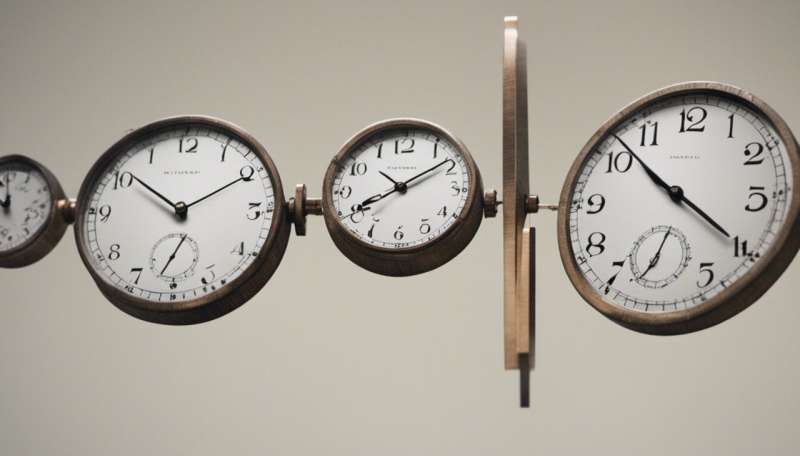How our biological clocks are locked in sync

Scientists from EPFL's Institute of Bioengineering have discovered that the circadian clock and the cell-cycle are, in fact, synchronized.
Nothing in biology is static; everything is fluid, dynamic and ever-moving. Often, this movement occurs in repeating patterns—regular, measurable cycles that tick just like "clocks."
Two of the most important such cycles are the circadian clock, which regulates the sleep/awake rhythm, and the cell cycle, which regulates the growth, life and death of virtually every cell in the body. Considering things like sleep abnormalities, cancer, aging and other related problems, it's not hard to see why both of these cycles have gained enormous interest from researchers.
One of the big questions in the field has been that of synchronization, a phenomenon first observed by Dutch physicist—and clock-maker—Christian Huygens. In synchronization, the rhythms (phases) of two oscillators match up in lockstep.
Naturally, the circadian clock takes up a daily rhythm, but it turns out that also the cell cycle in many systems involves a similar time scale. In addition, there is some evidence that suggests that both clocks might actually influence each other.
Now, scientists from the lab of Felix Naef have found that the circadian and cell-cycle clocks are actually synchronized. The breakthrough study is published in Nature Physics, and is also featured on the journal's News and Views section.
To carry out the study, the scientists developed a "small data" methodology to build and identify a mathematical model of the coupled clocks from time-lapse movies of thousands of single cells from mice and humans.
The model allowed them to predict and measure phase shifts when the two clocks were synchronized in a 1:1 and 1:2 pattern, and then look at how system noise influences this synchronization. Finally, the researchers investigated as well how it might be modeled in a randomized way ("stochastically"), which would better capture what happens in real cells.
The synchronization was also found to be remarkably robust against temperature changes, which is known to affect the cell-cycle clock, changing the rhythm of cell divisions. The team found that this circadian-cell cycle synchronization is common across different species including human, suggesting a fundamental biological mechanism behind it.
"This interaction might play a physiological role," says Felix Naef. "It can explain why different body tissues have their clocks set at slightly different times, a bit like world time zone wall clocks in an airport."
The implications of the study are significant, and Nature's News & Views describes it as "a new chapter in the story of how non-linear coupling mechanisms can be of fundamental importance to our understanding of living systems."
More information: Colas Droin et al. Low-dimensional dynamics of two coupled biological oscillators, Nature Physics (2019). DOI: 10.1038/s41567-019-0598-1
Journal information: Nature Physics , Nature
Provided by Ecole Polytechnique Federale de Lausanne




















